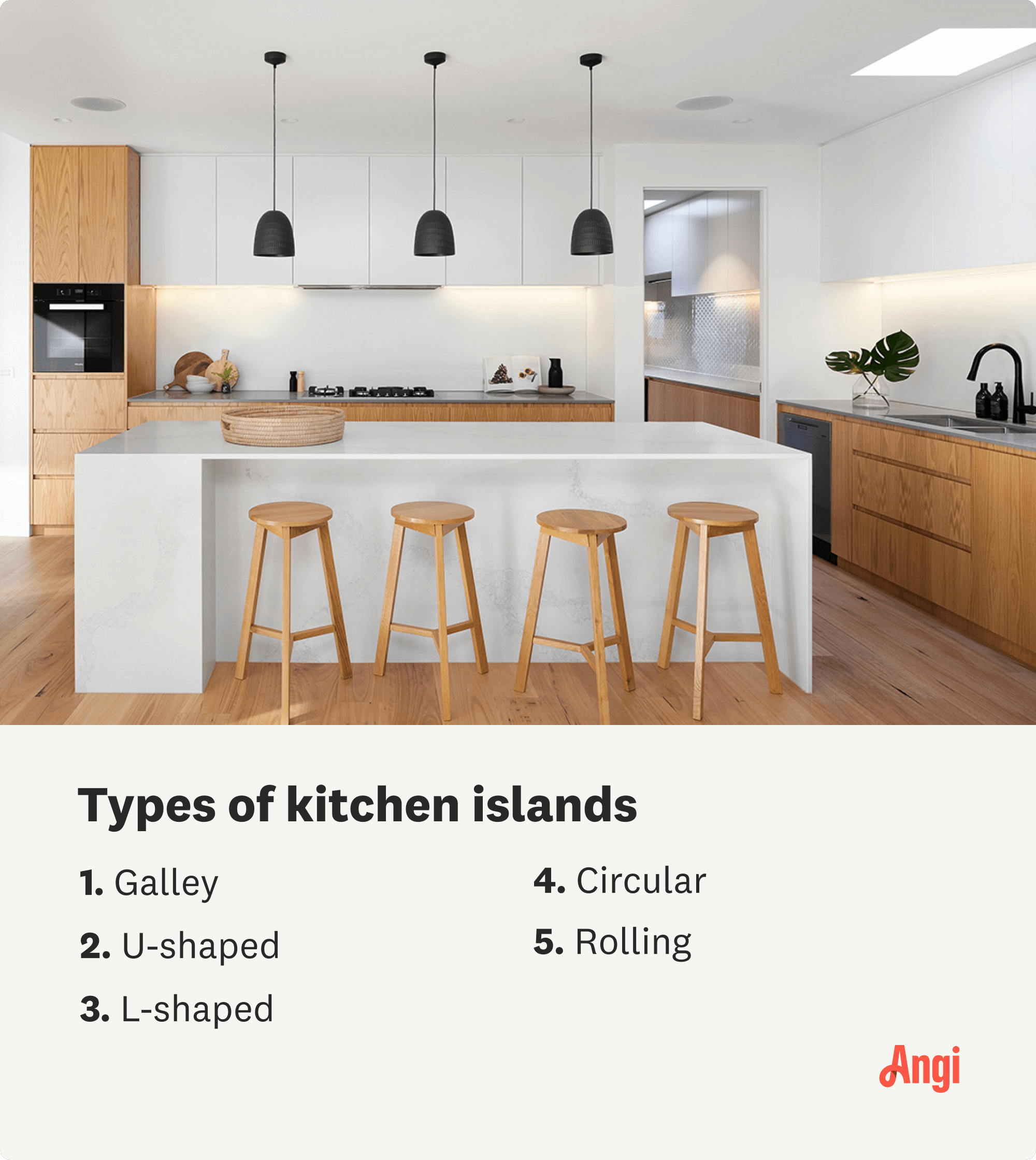Everything You Need to Know About Kitchen Islands
Take your kitchen to the next level
Highlights
Kitchen islands offer extra space for storage and food prep.
There are multiple styles to choose from.
The sizing and placement of your island is crucial.
Cost varies depending on style, size, and materials.
Over the last few decades, the kitchen has become the beating heart of the home. Aside from being the space where you cook all your meals, it’s often used as the dining room and the main gathering hub for family members and guests. And tying it all together is your kitchen island.
From a design perspective, a kitchen island can be a valuable addition since it provides extra storage and counter space. But more than that, it can also provide a natural space for eating and socializing. Here’s what you need to know about kitchen islands to make an informed decision.
What Is a Kitchen Island?
A kitchen island is a freestanding cabinet/countertop that adds additional square footage for counter space, storage, and food prep. Islands come in all sizes and styles, and are constructed from all manner of materials, from rustic wood to gleaming stainless steel. You can also add fixtures like a sink, stovetop, or bookshelves.
And when you add chairs or stools around your island, this becomes a great place for everyone to congregate. Of course, kitchen islands do tend to take up a lot of space, so you need to be sure that you select the appropriately sized island for your room.
What Are the Different Types of Kitchen Islands?

Depending on what you plan to use your island for, and how much space you have in your kitchen, there are different designs, features, and materials to take into consideration.
These are the main types of kitchen island styles:
Galley
The galley design is simple and classic with a straight design. One side typically features seating. It’s the perfect pick for open-concept kitchens since it doesn’t close off space or interrupt the flow of the room.
U-Shaped
Do you have more appliances and cookware than you know what to do with, and are lucky enough to have a spacious kitchen? A U-shaped island has cabinets or countertops along three walls, so it’s great for those who want as much prep/storage/seating space as possible.
L-Shaped
An L-shaped island is a good choice for homeowners with bigger kitchens who want a sprawling workspace and ample storage space, but don’t want to commit to the full U-shape. This style definitely isn’t recommended for anyone with a small, narrow kitchen.
Double-Tiered
Do you want to have separate spaces for eating and cooking? Opt for a double-tiered kitchen island—the lower level works well for food prep, while the higher level can accommodate bar-style seating.
Circular
Circular islands (which come in full circle, oval, and half-circle designs) make for a visually appealing addition to any kitchen. They’re best for those who want more prep and seating space, but are not ideal if you’re looking for a ton of extra storage space.
Rolling
If you simply don’t have room for a built-in island, you could opt for a kitchen island on wheels (or rolling cart). A rolling cart is more versatile and compact than a built-in island. So, if you’re just using your island to maximize storage and food prep space, this is a solid choice.
How Much Space Do I Need for a Kitchen Island?
The average dimensions of a kitchen island are 3 feet by 6.5 feet. Of course, the size of your kitchen will determine how big or small your island should be.
And, it’s not just the size of the island you should consider—don’t forget to take into account the space around the island. You should have enough space (at least a few feet) to allow for natural, easy movement around an island, without cutting into the path between the sink, stove, and fridge.
It can be helpful, when thinking about placement, to consider the “kitchen triangle” rule. This rule states that the kitchen’s main three work areas (the fridge, sink, and stove) should form a triangle.
Each leg of the triangle should be between 4 and 9 feet each, and the perimeter of the triangle should be no less than 13 feet and no more than 26 feet. This helps to create a seamless, efficient space for you to easily move about.
It’s also worth noting that the center of the room may not be the best place for your island. For example, if you’ll primarily be using your island for food prep, you may want to ensure that it’s located near appliances or outlets, or near the fridge or pantry for quick, easy access to ingredients.
What Are the Pros and Cons of a Kitchen Island?
There are several benefits to having a kitchen island. Not only does an island provide extra storage and workspace for preparing and eating meals, but it can also boost your kitchen’s aesthetic. Plus, bigger islands even allow for extra seating.
If, however, you have a somewhat small kitchen, adding an island could overwhelm the room and impede your ability to move around freely and safely—especially if you purchase or install an island that doesn’t conform to the size of your kitchen.
How Much Does a Kitchen Island Cost?
The cost of a kitchen island varies widely depending on the style and materials used. That said, the average cost of a kitchen island is about $4,000. If you’re remodeling your kitchen, the cost of a new island is roughly 4% of your total kitchen remodel costs.
However, a rolling island will likely only set you back a couple hundred dollars at most. The bigger the island, the more features it has, and the higher-quality the materials, the more you can expect to pay.
